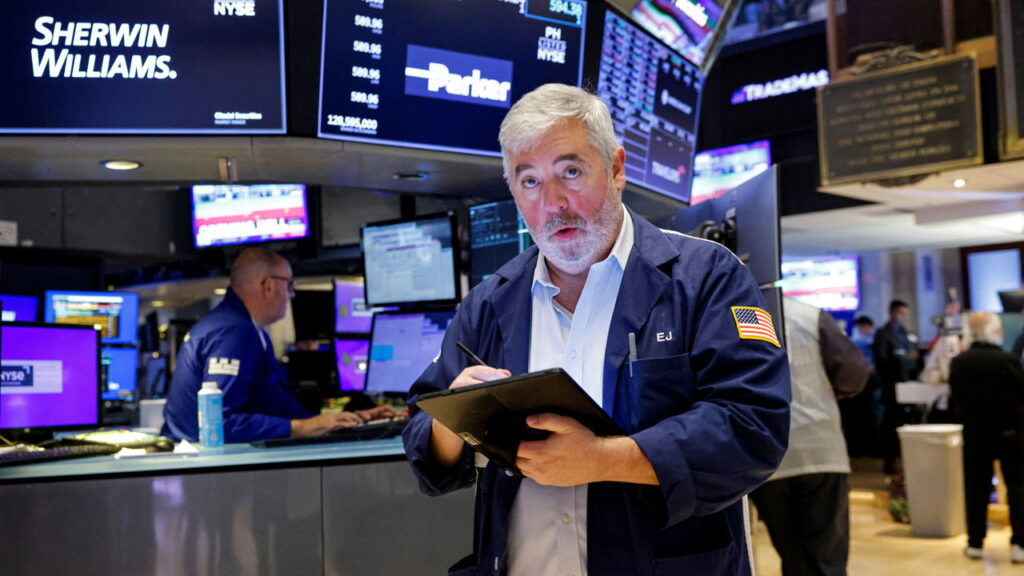As investors return from their summer vacations, a wave of disappointment may wash over them as they glance at their portfolios. The initial days of September have not been kind to the stock markets. On the first trading day of the month, America’s benchmark S&P 500 index experienced a notable downturn, dropping by 2%. This poor performance set the tone for European markets, which followed suit on September 4th, and Japanese equities, which have exhibited an even steeper decline. The sudden shift in market sentiment is a stark contrast to the calm and steady growth that characterized the preceding weeks leading up to Labor Day.
In August, investors experienced a sense of euphoria, with American share prices concluding the month just shy of a historic peak, specifically a mere hundredth of a percentage point below the all-time high achieved in July. Similar trends were evident in European markets, which also showed a relatively strong performance during the same period. Meanwhile, Japanese stocks, although slightly lagging, were still just a few percentage points from their peak values. The prevailing optimism was buoyed by easing inflation rates across the developed world, signaling a potential shift in monetary policy.
Inflation data revealed a cooling trend, providing a reassuring backdrop for investors. This easing of inflation rates contributed to a general expectation that the Federal Reserve could initiate interest rate cuts in the forthcoming meetings set for September 17th and 18th. The anticipation of lower borrowing costs typically stirs confidence in the market, as it often heralds an environment conducive to spending and investment. Investors had reason to believe that a shift in policy could support continued growth, especially as businesses and consumers adjusted to prevailing economic conditions.
However, this encouraging sentiment quickly turned on its head as September unfolded. The unexpected decline in stock values serves as a reminder of the inherent volatility that characterizes financial markets. Factors contributing to this downturn may include a range of domestic and international pressures, investor sentiment, and geopolitical concerns that could create uncertainty. For instance, fluctuations in commodities, potential shifts in trade policies, and global economic indicators play crucial roles in shaping market dynamics.
As the week progressed, analysts began scrutinizing various sectors to identify potential catalysts for recovery. The technology sector, which had been a primary driver of market gains in previous months, saw pronounced fluctuations. Companies within this space faced a myriad of challenges ranging from regulatory scrutiny to supply chain disruptions, which could hamper growth prospects. Investors remained vigilant, monitoring earnings reports and guidance from corporate leaders to gauge whether the downturn was a temporary blip or indicative of more significant problems looming on the horizon.
The ongoing saga of inflation and its impact on consumer behavior also loomed large in investors’ minds. If inflation were to rise again without a corresponding increase in wages, households might tighten their belts, resulting in decreased spending. Such behavior would inevitably affect corporate profits, leading to a further downward spiral in stock prices. Investors keenly awaited economic indicators that could provide insight into consumer confidence and overall market health.
In summary, the market conditions as September rolls in reflect a significant departure from the reassuring trends observed in August. Despite the light of optimism ushered in by falling inflation rates and the potential for interest rate cuts, investors faced the stark reality of a volatile market landscape. The losses incurred in early September have raised concerns that many had hoped would dissipate following a strong summer performance. As attention now shifts to the impending Federal Reserve meetings and subsequent market reactions, the outlook for investors remains uncertain, underscoring the unpredictability that is inherent in financial markets. In navigating these tumultuous waters, it is essential that investors remain focused on long-term strategies rather than reacting impulsively to short-term market fluctuations.



